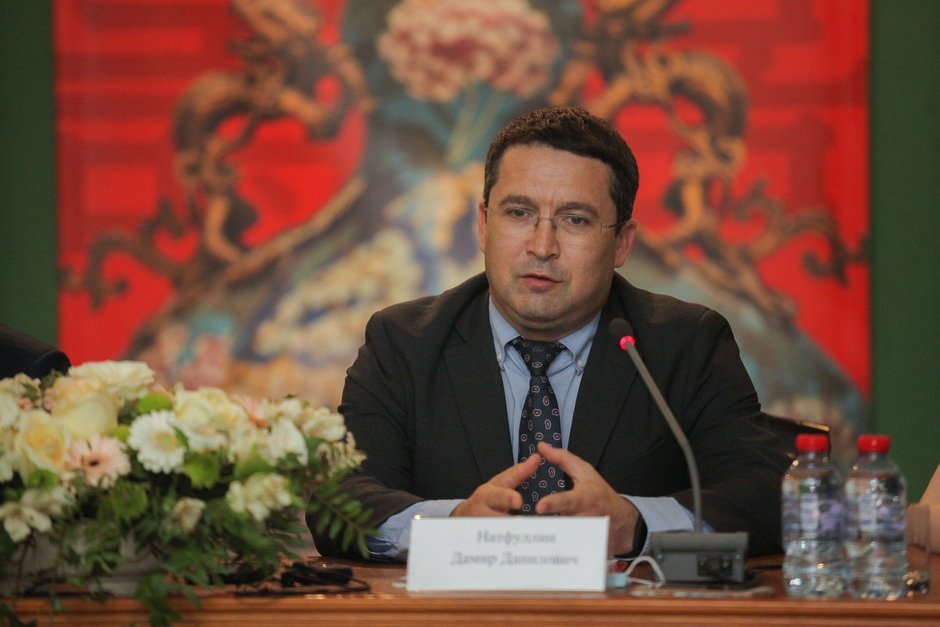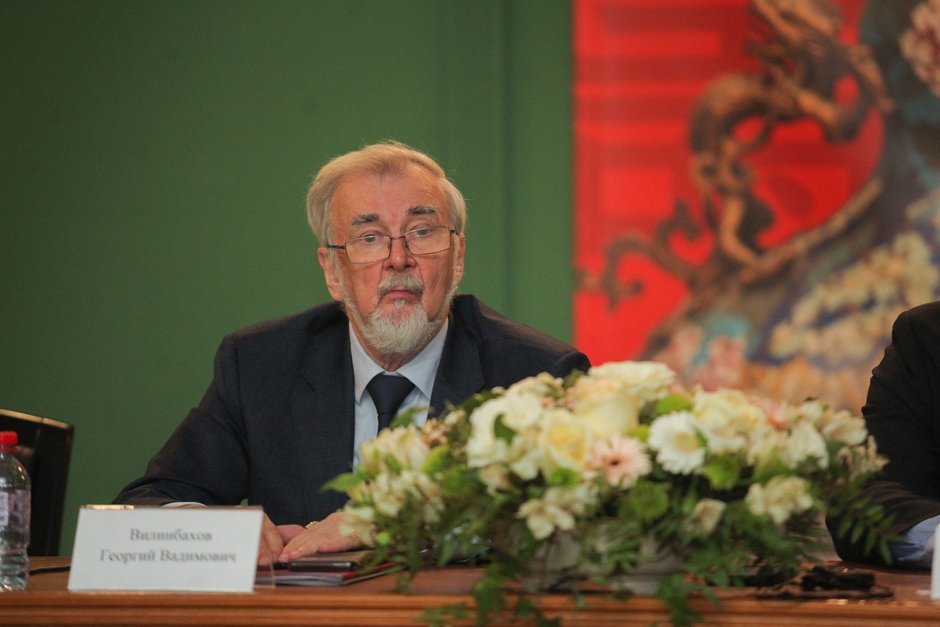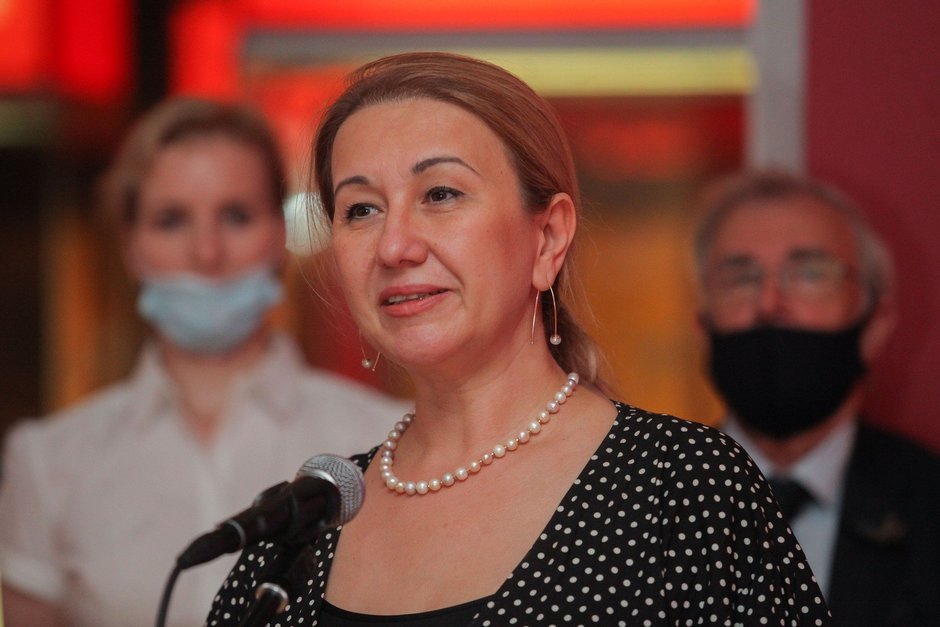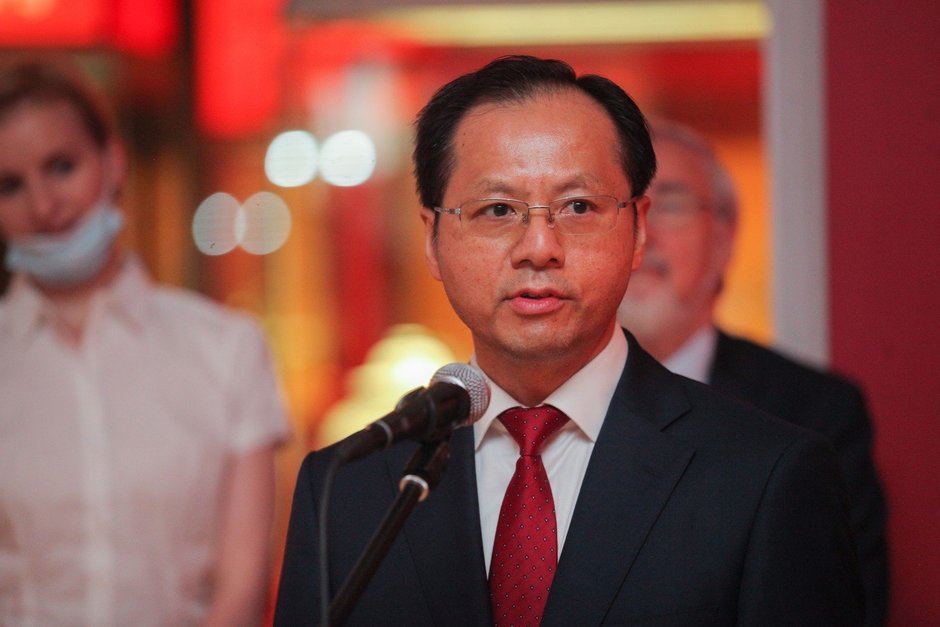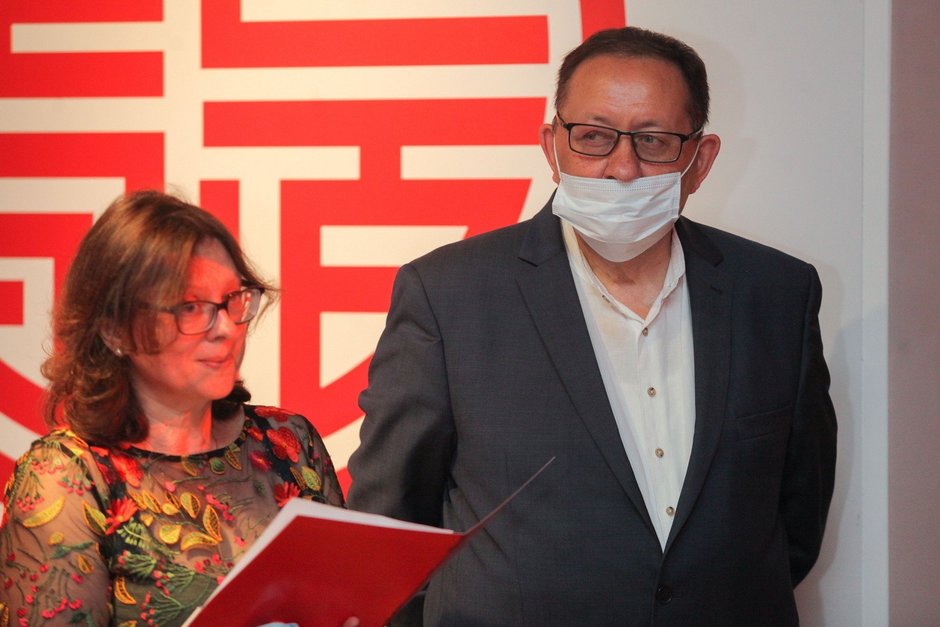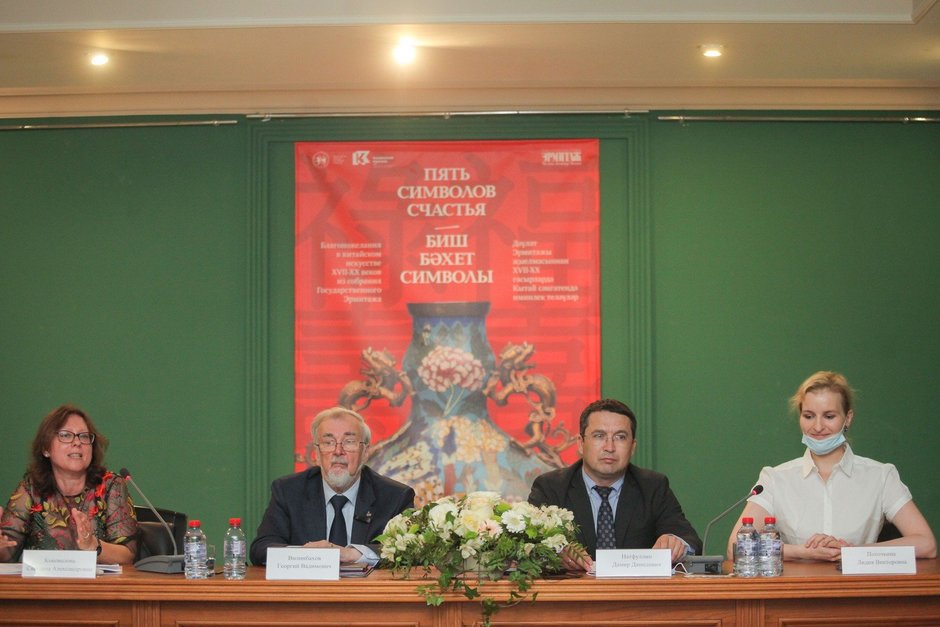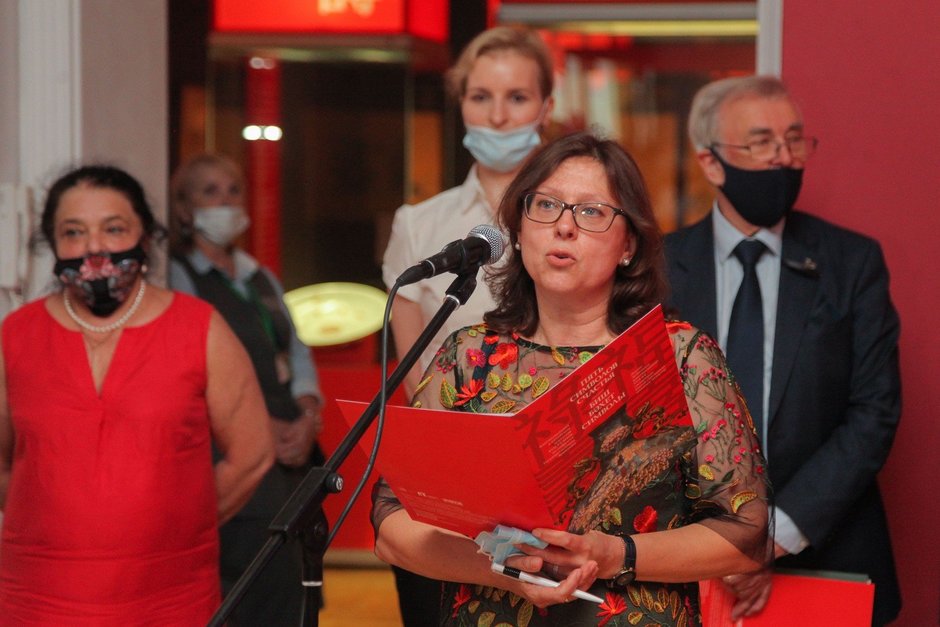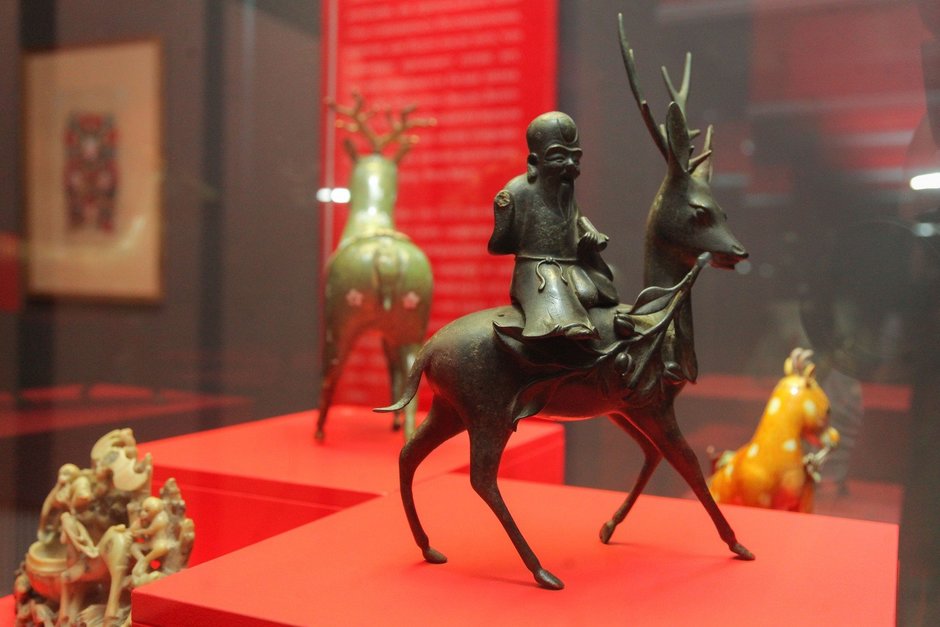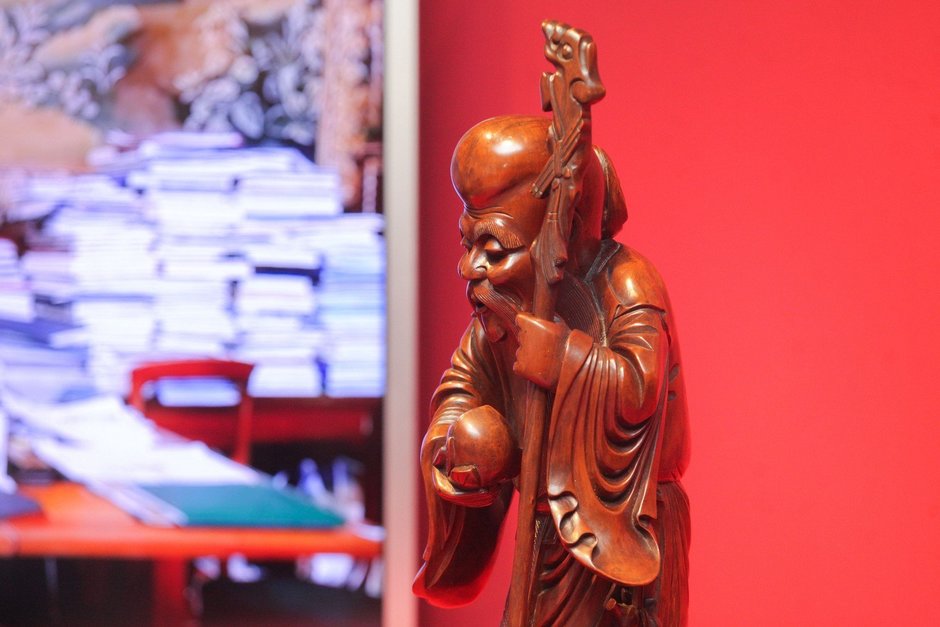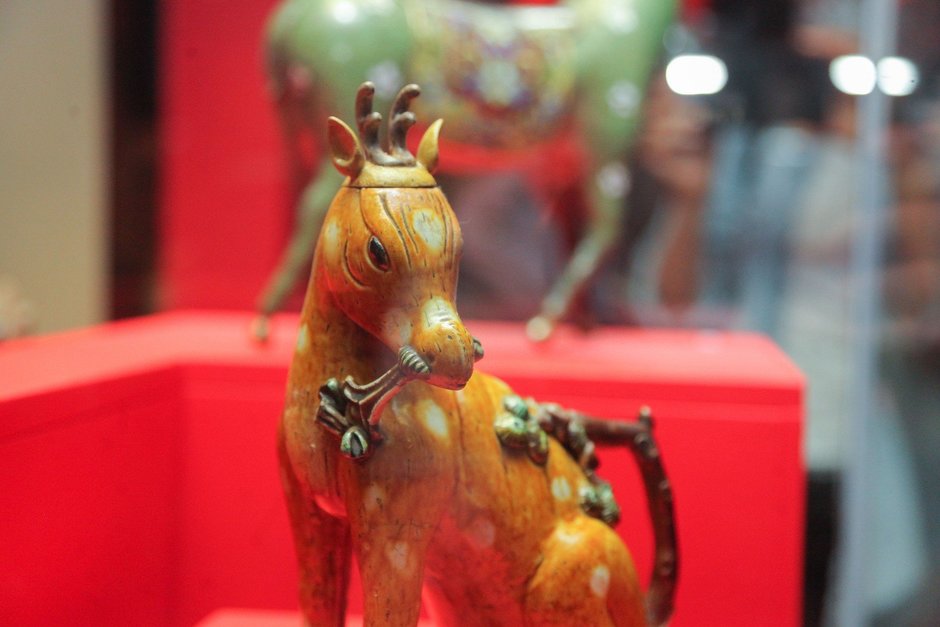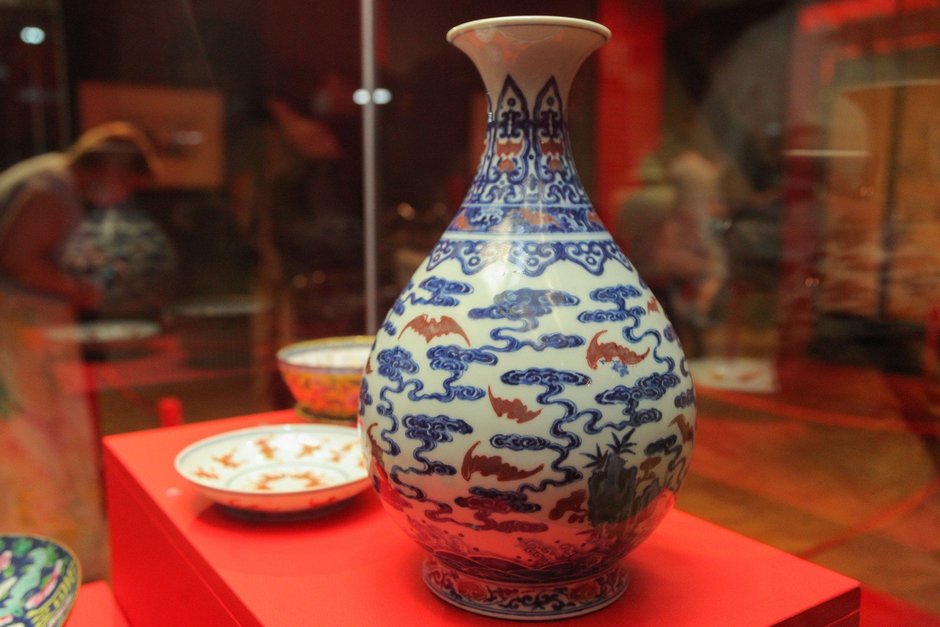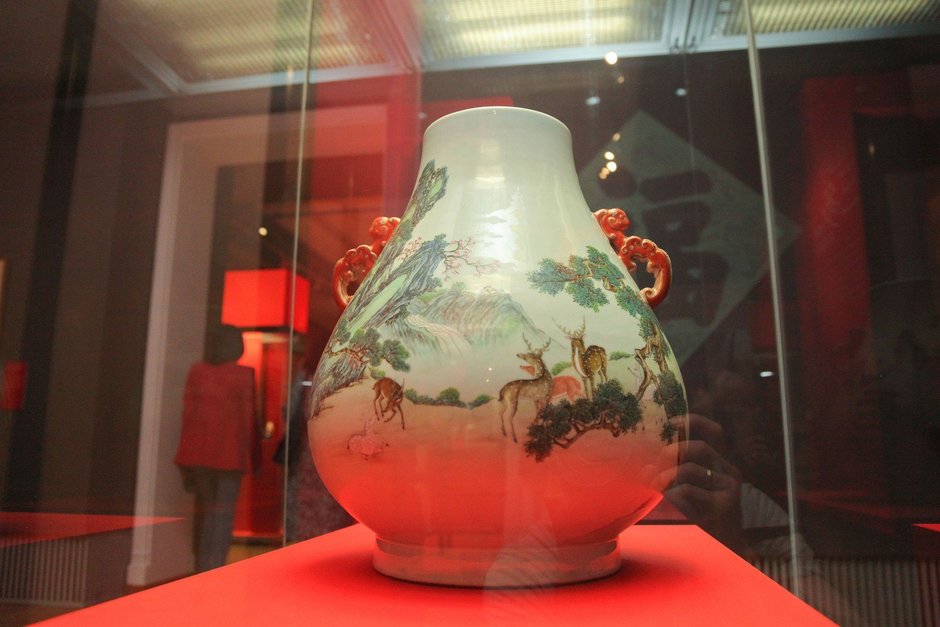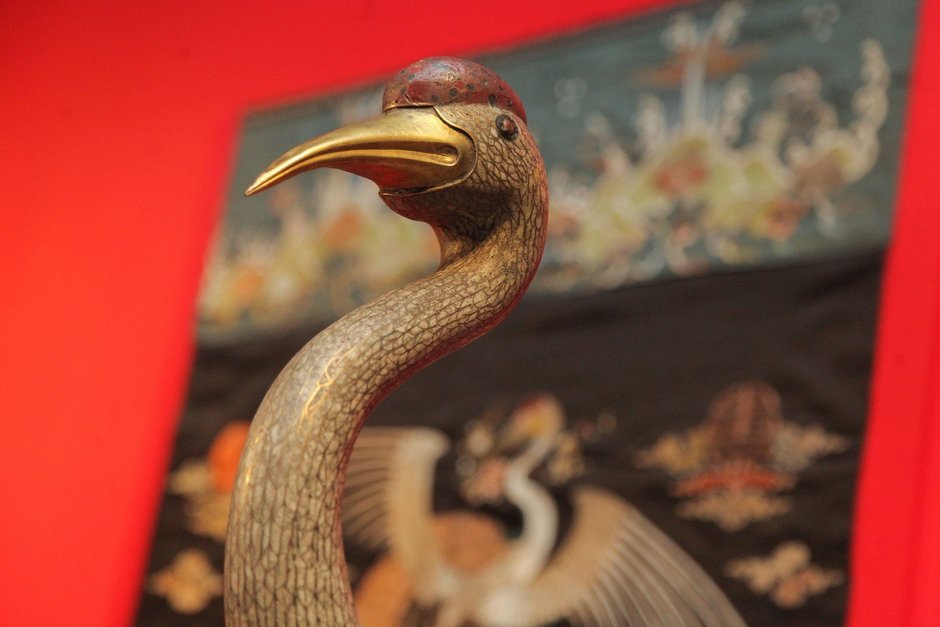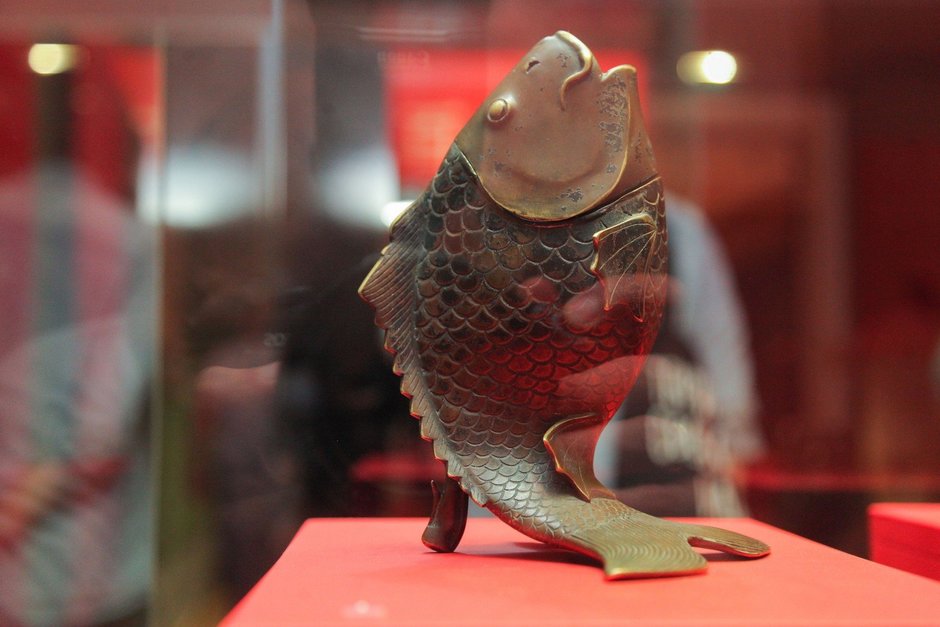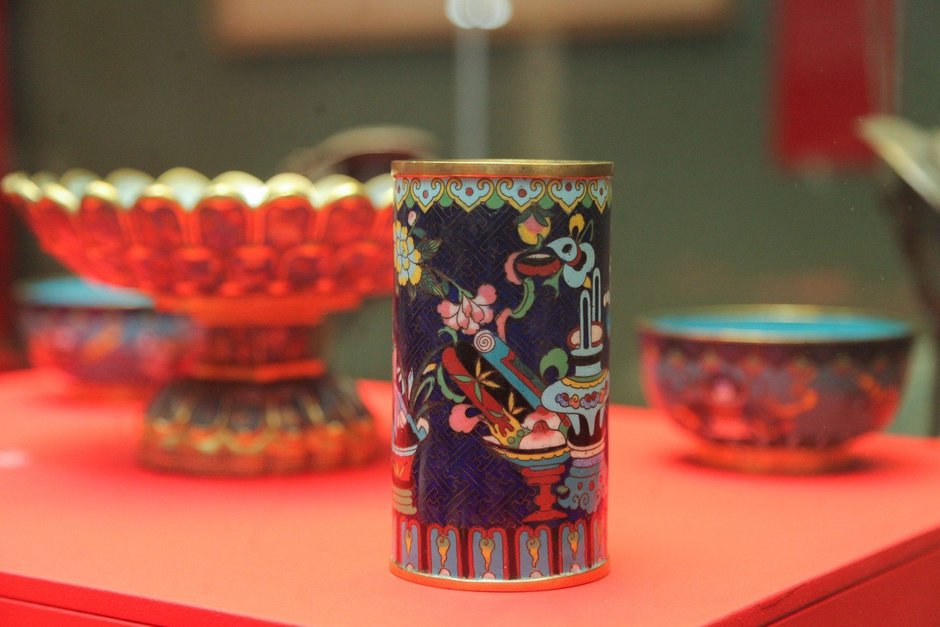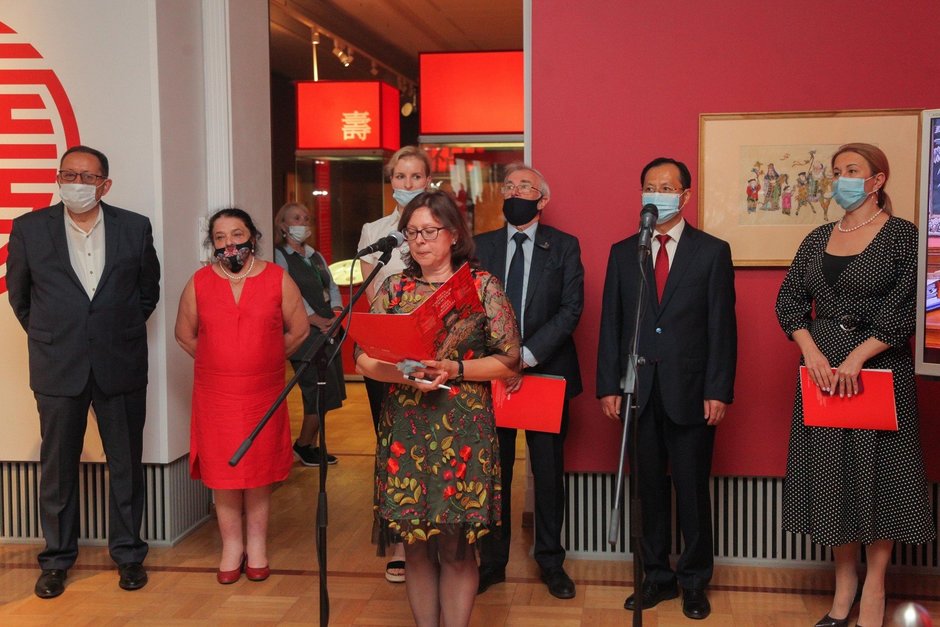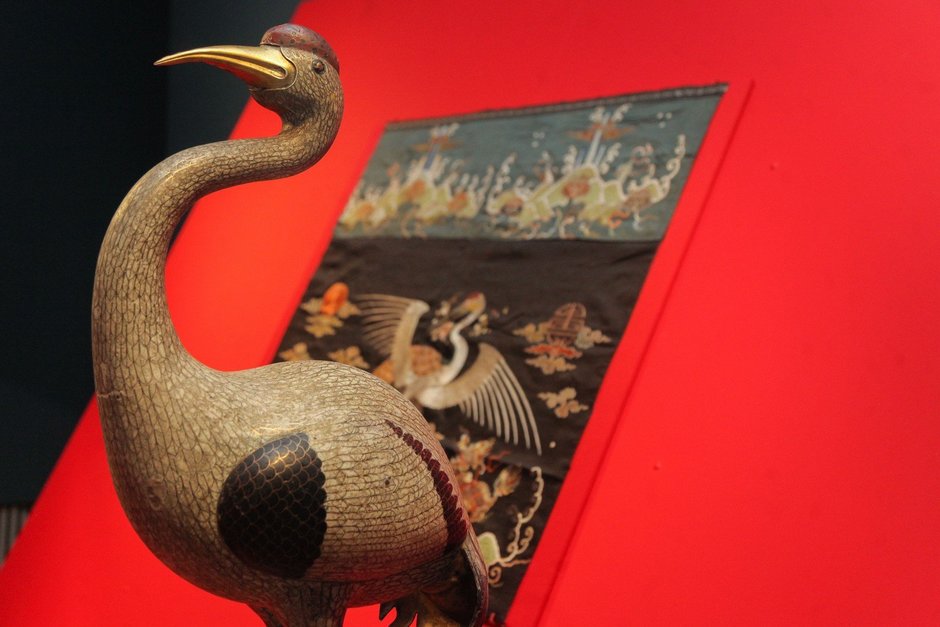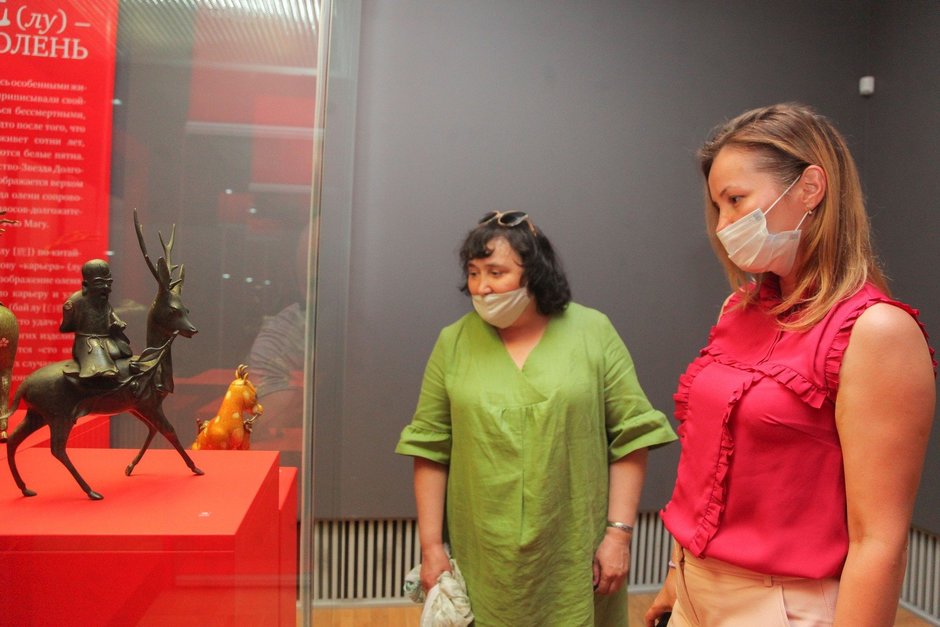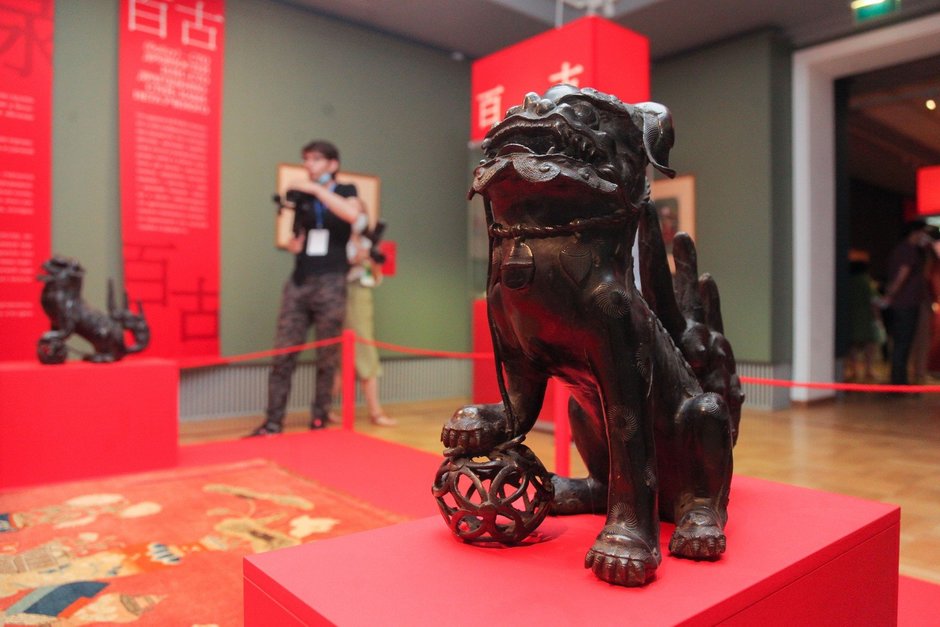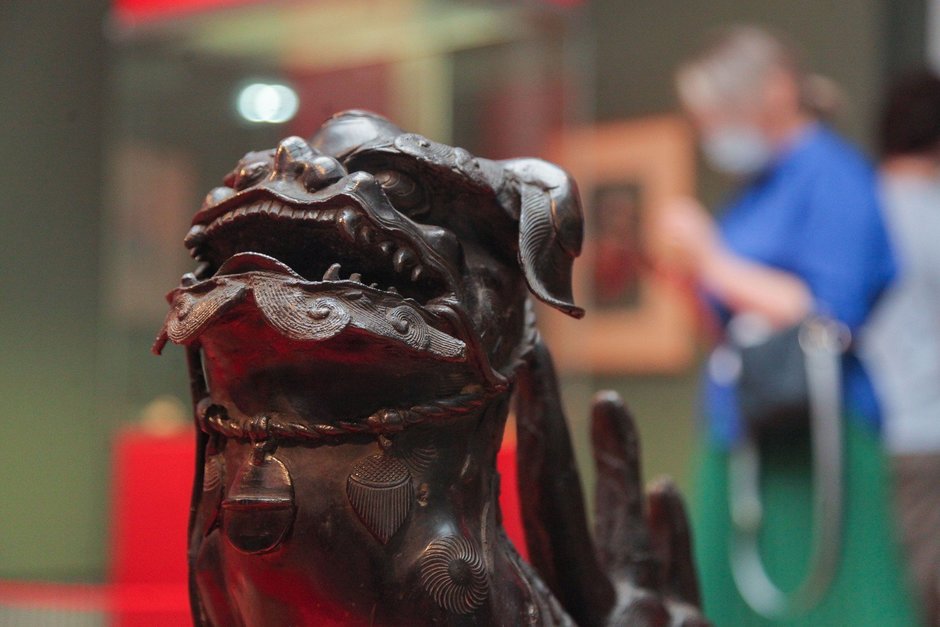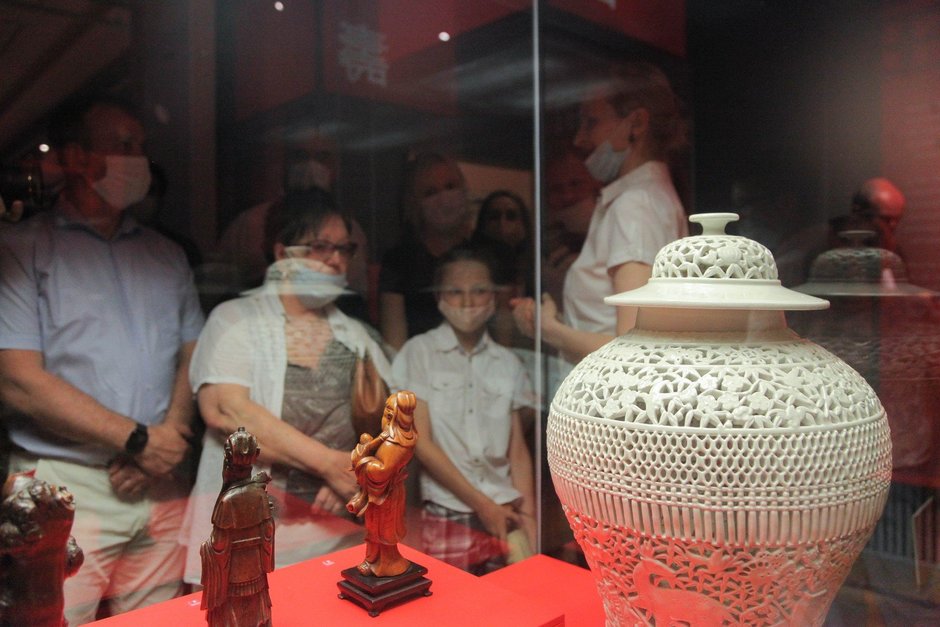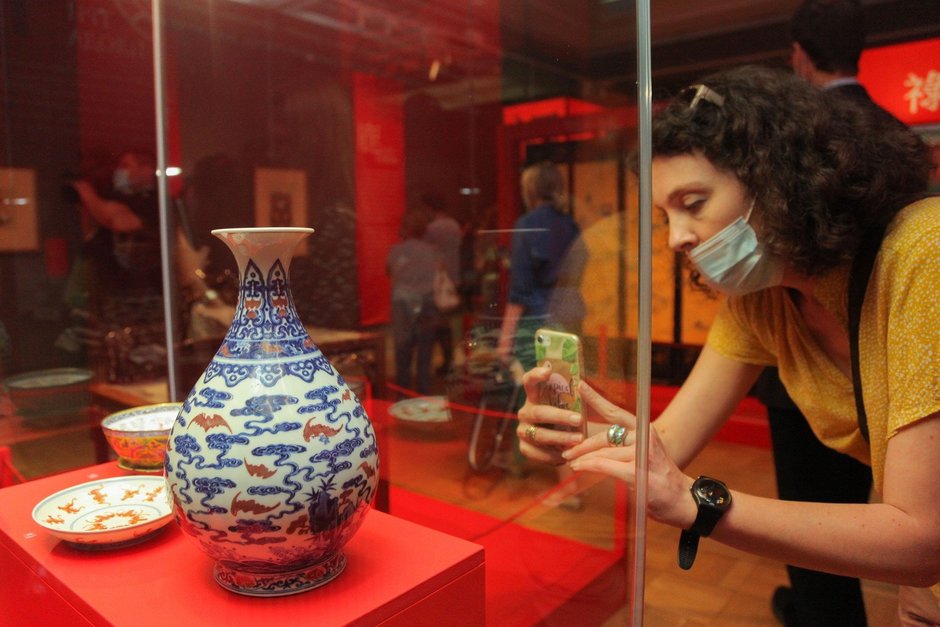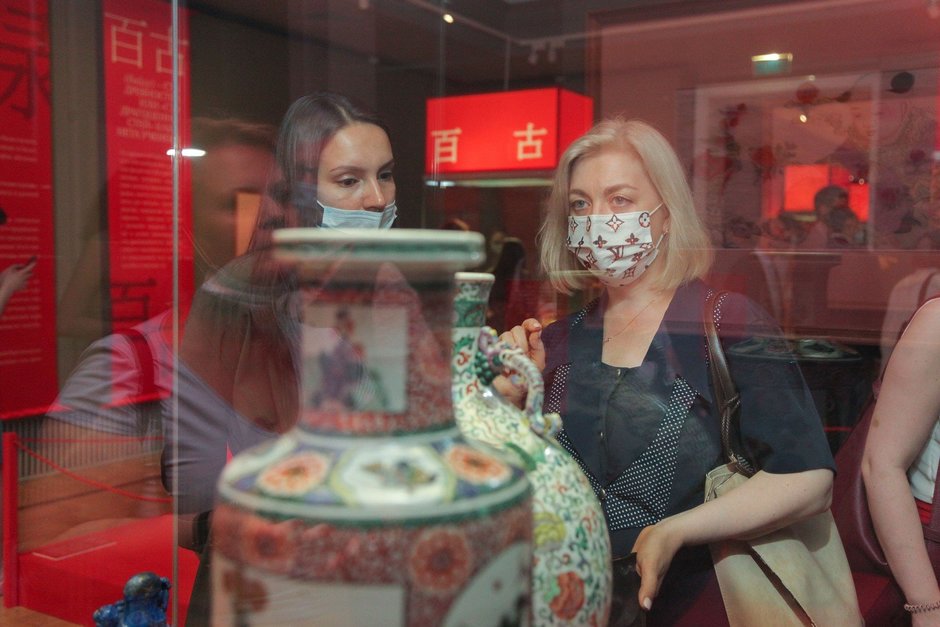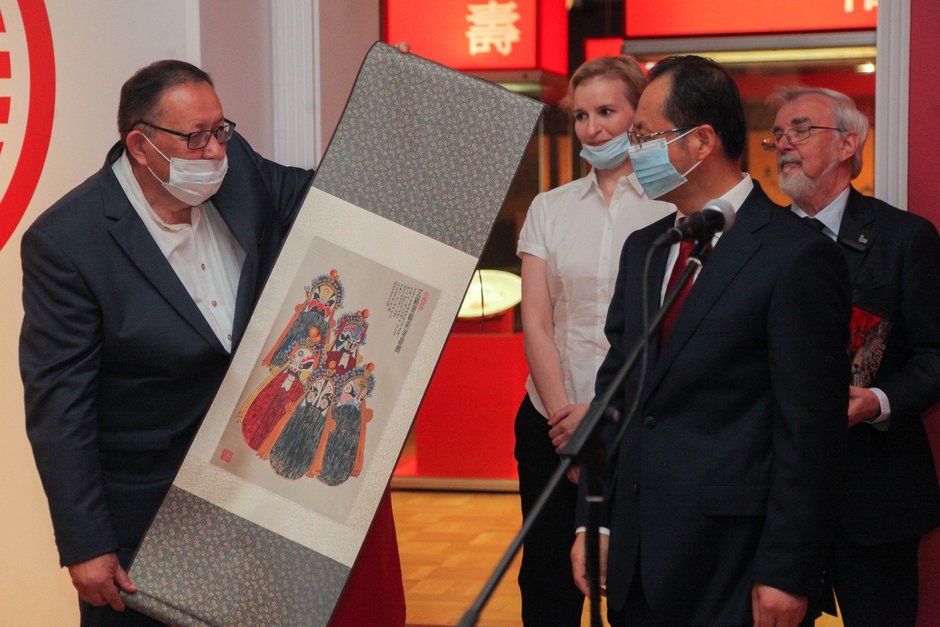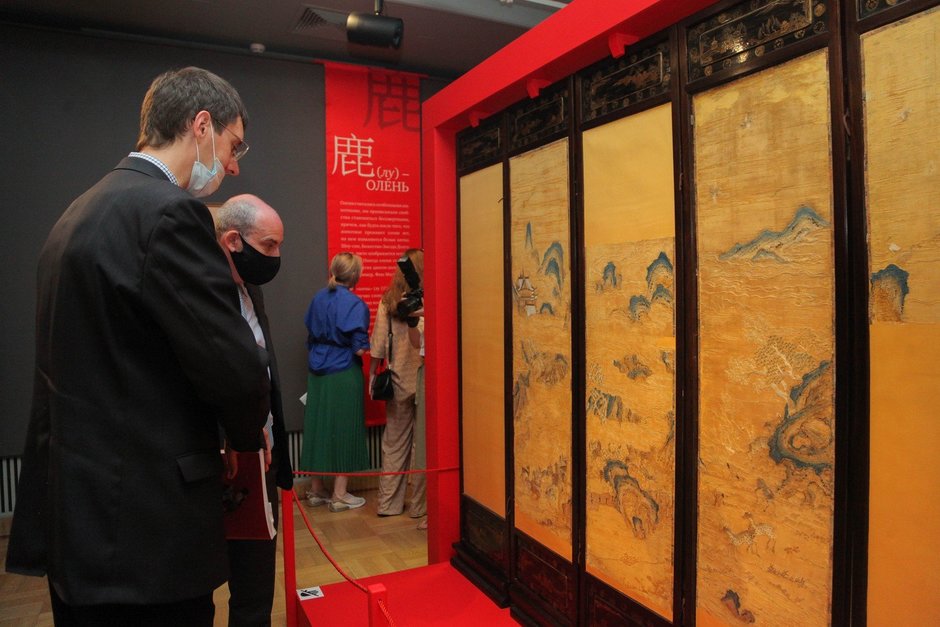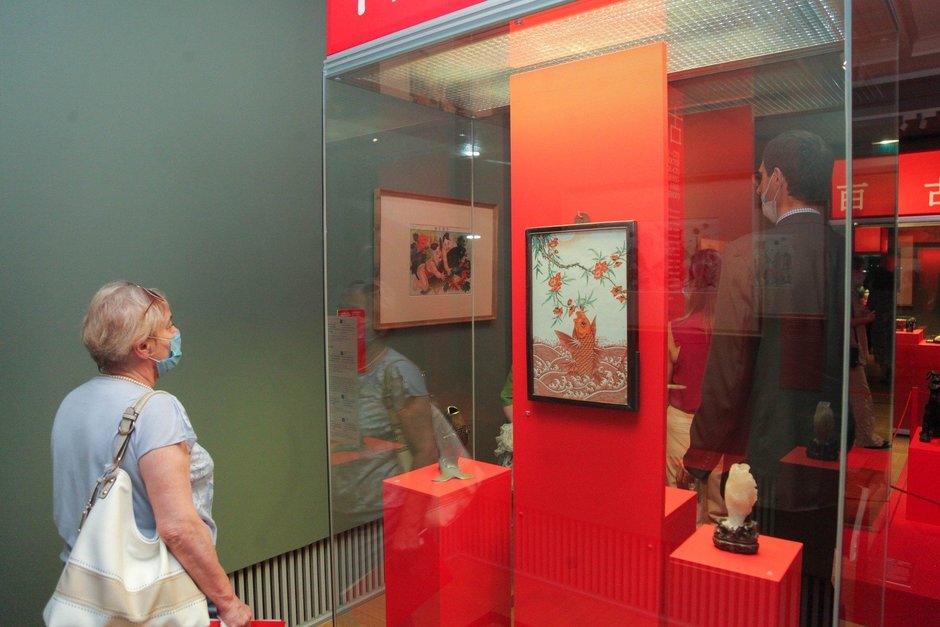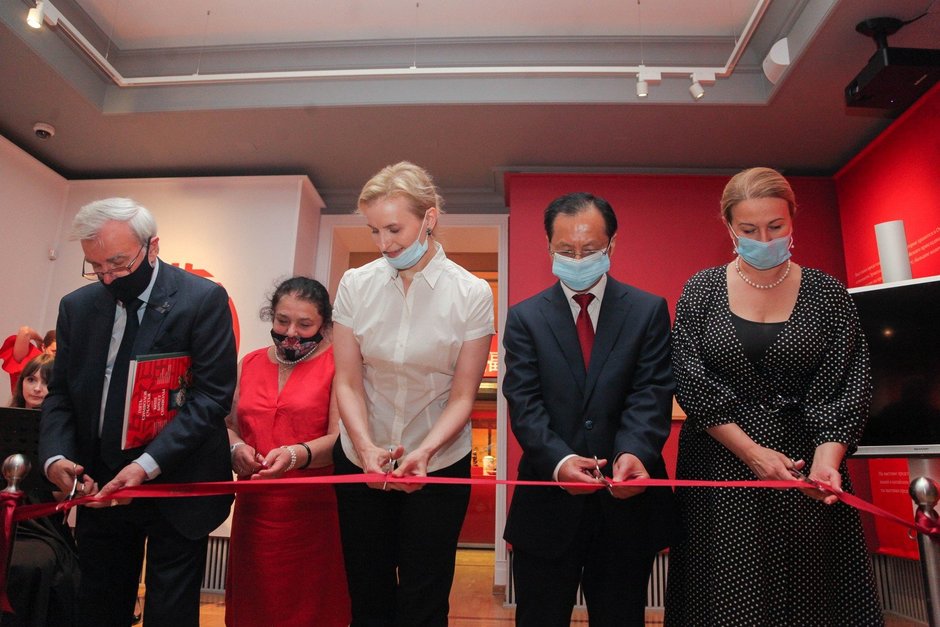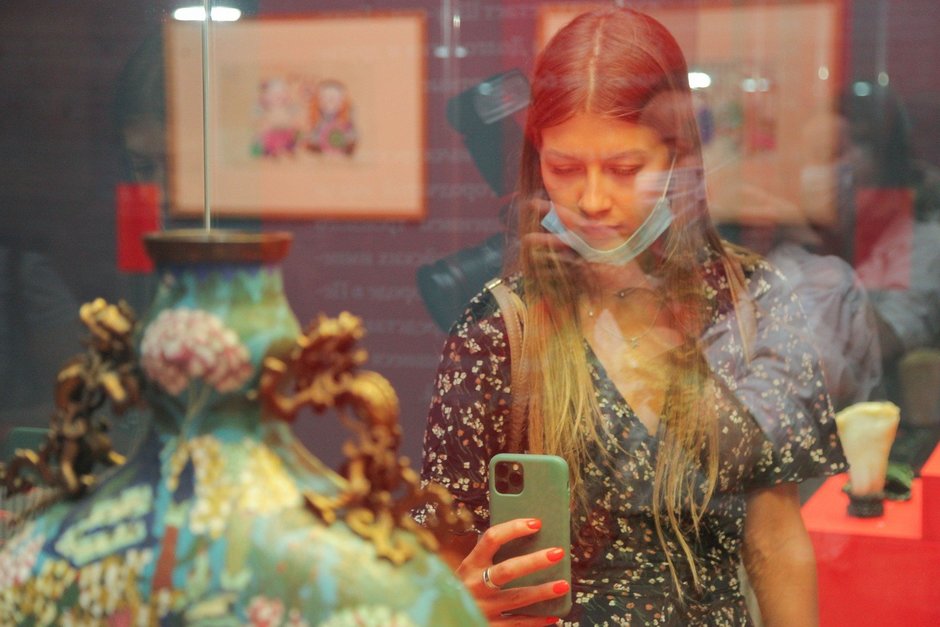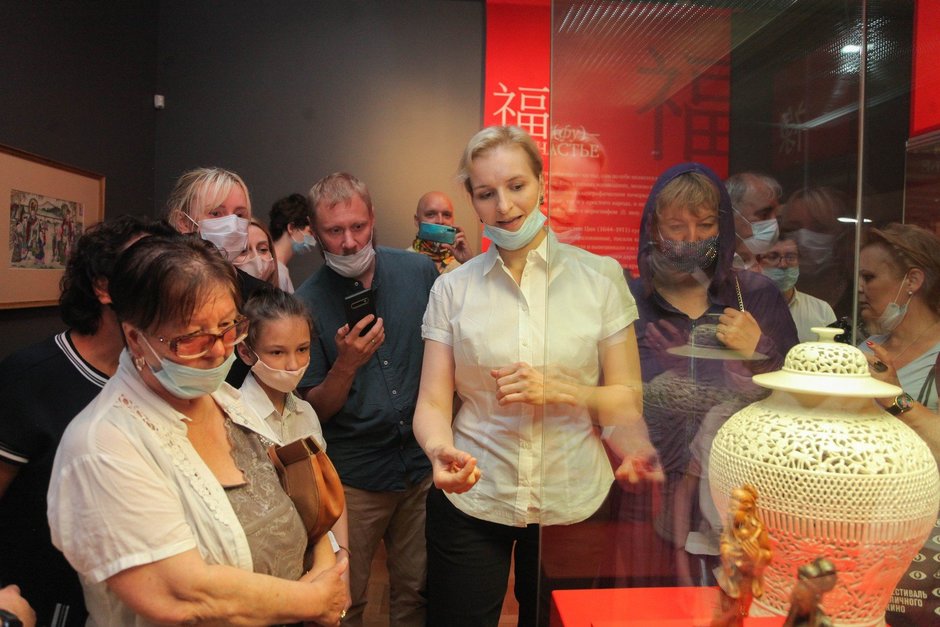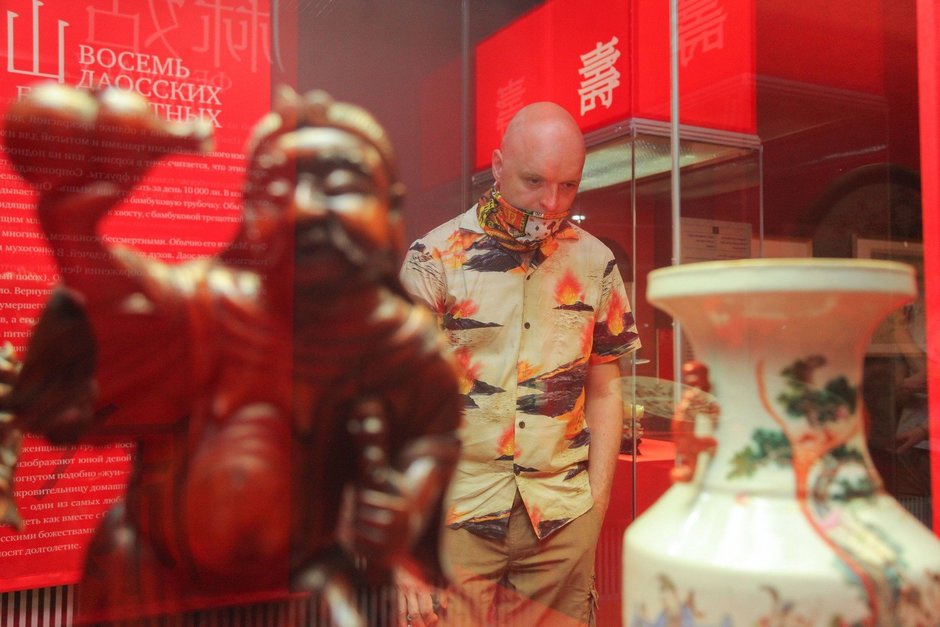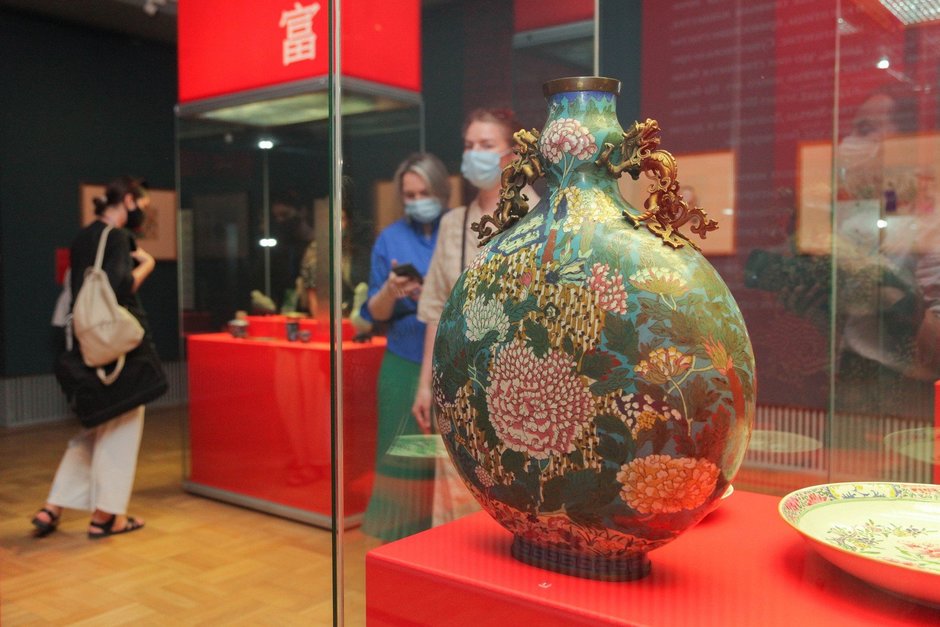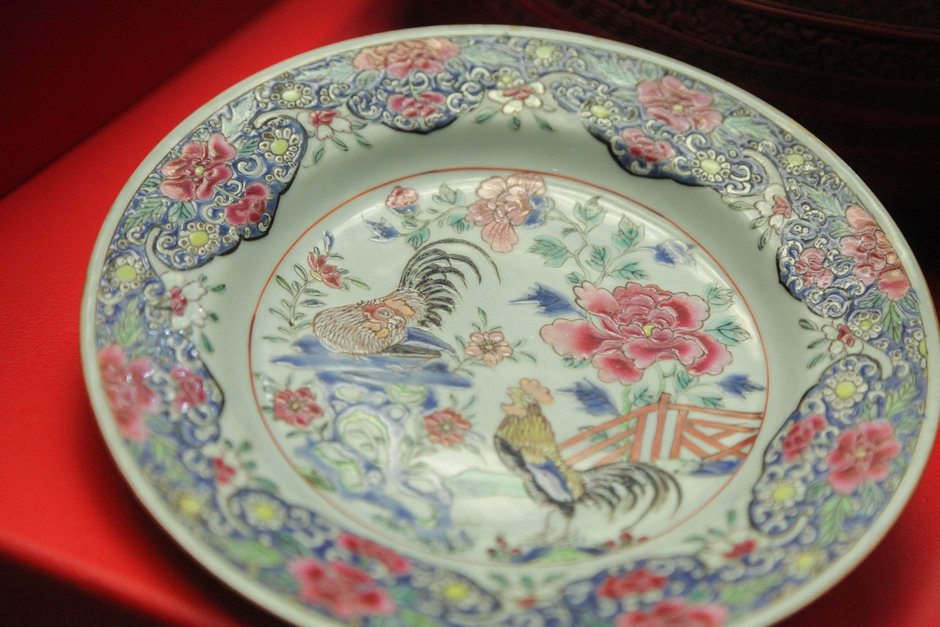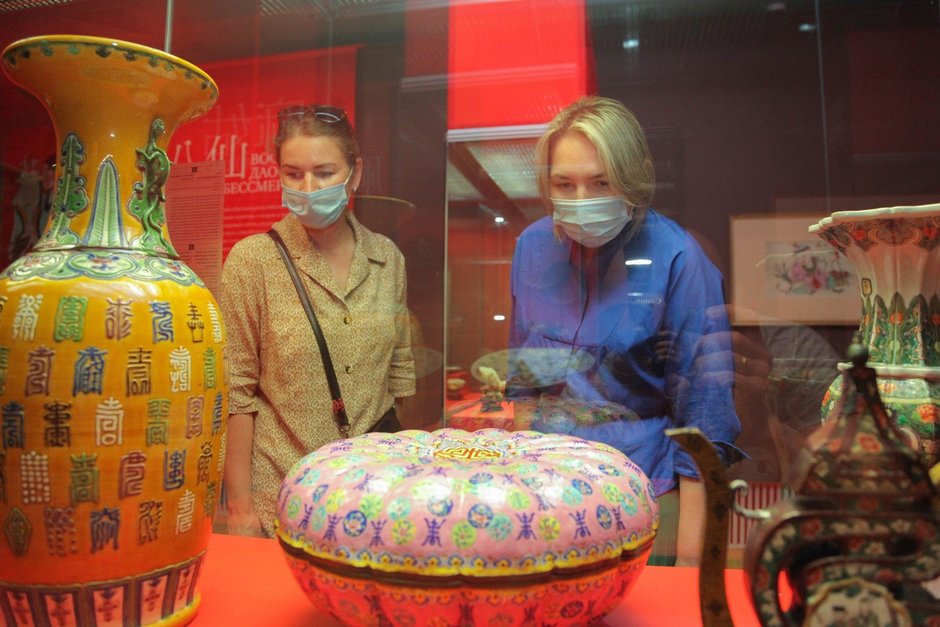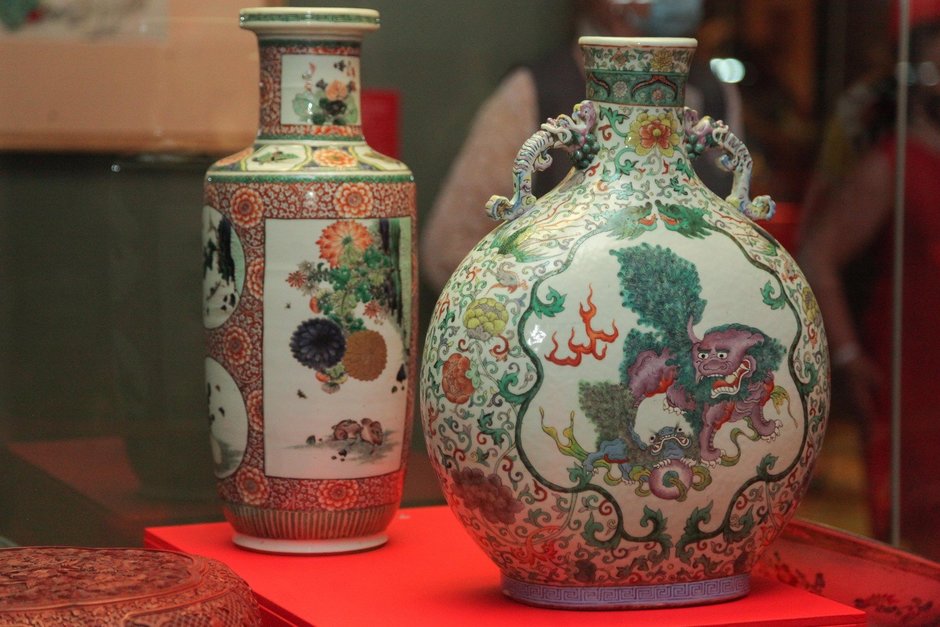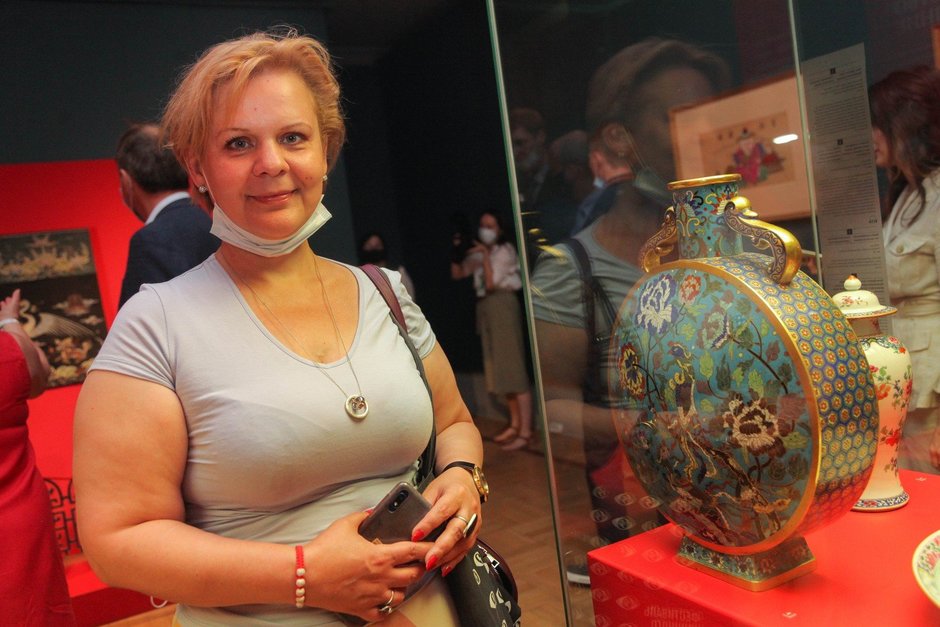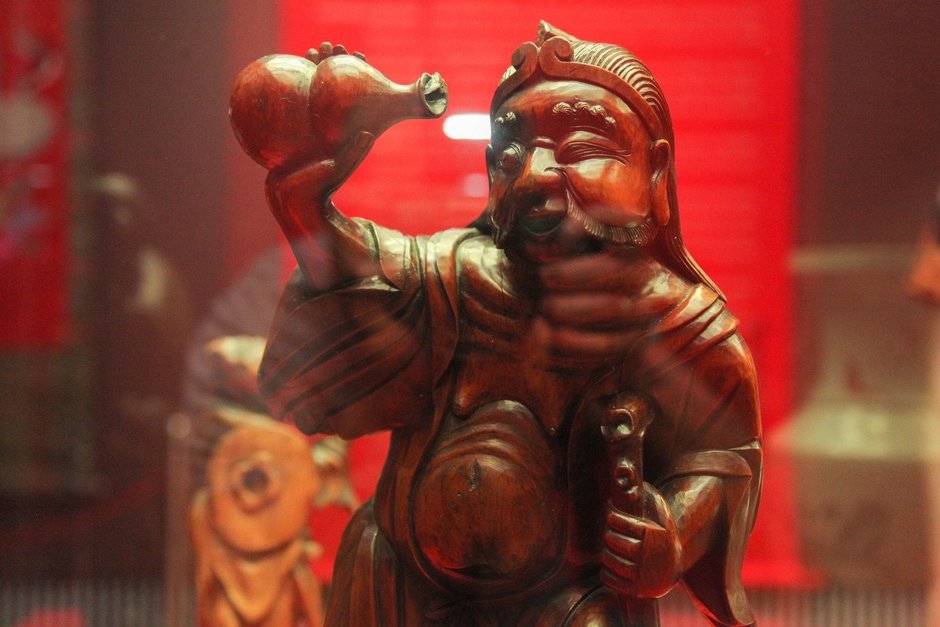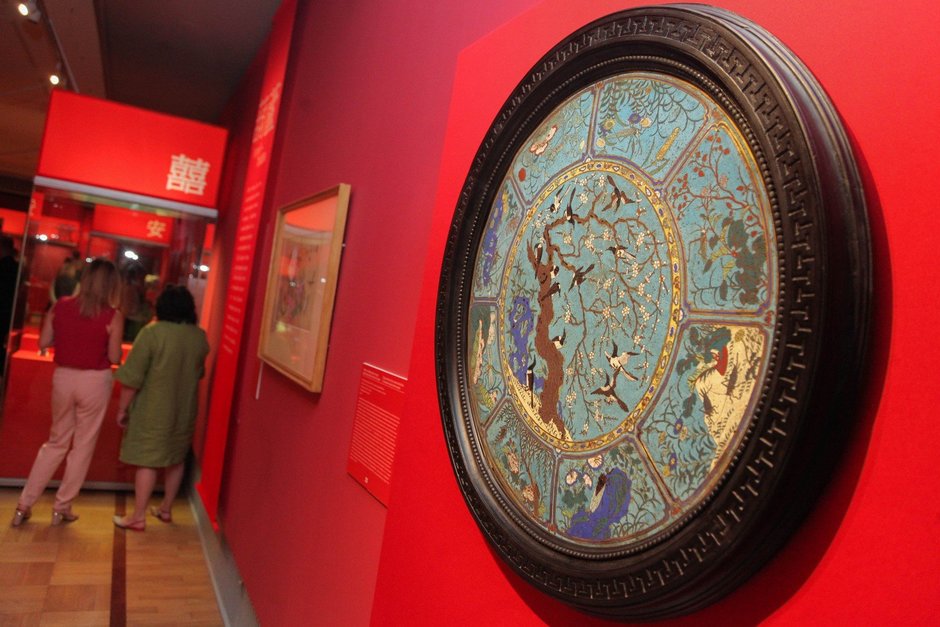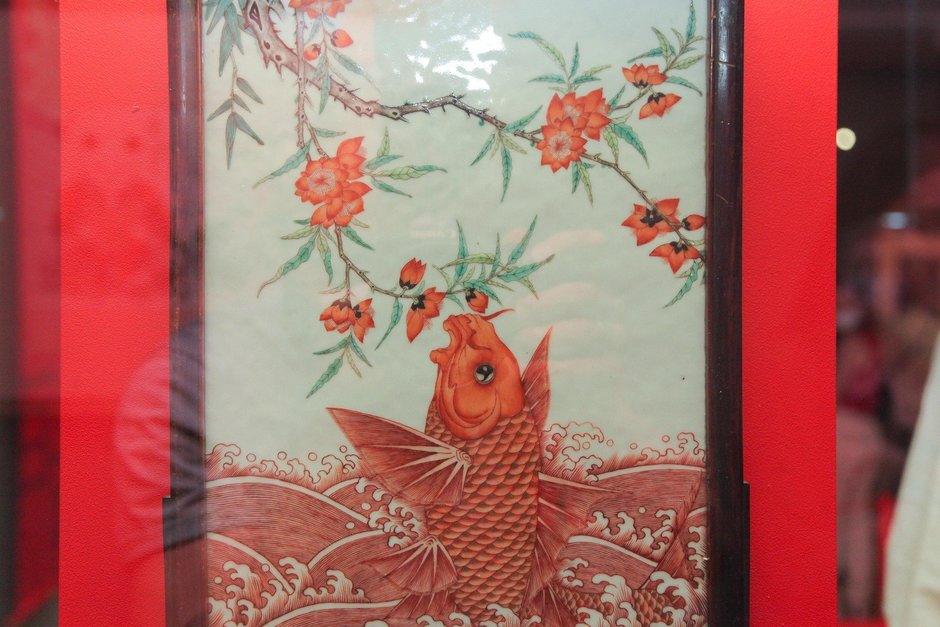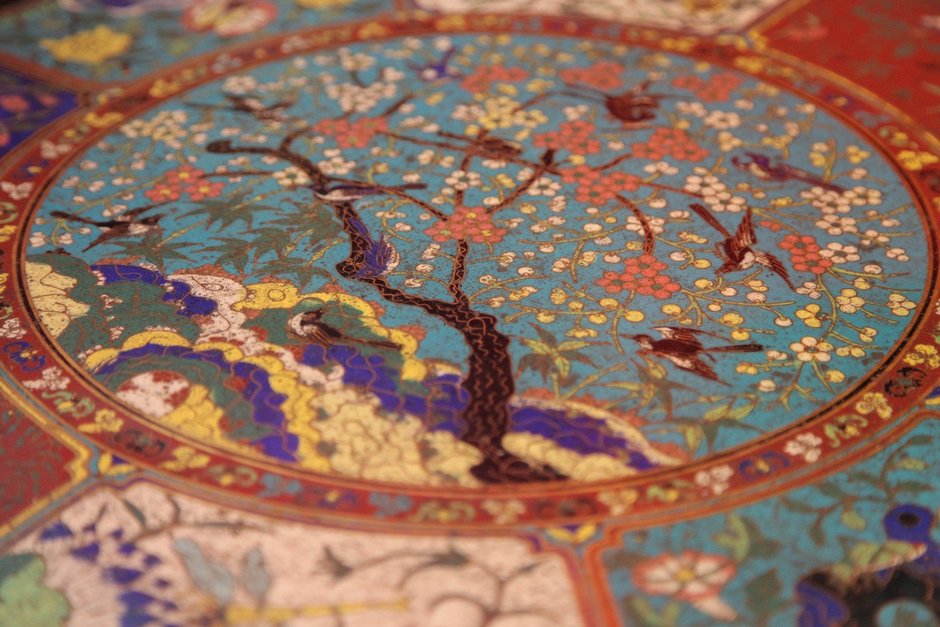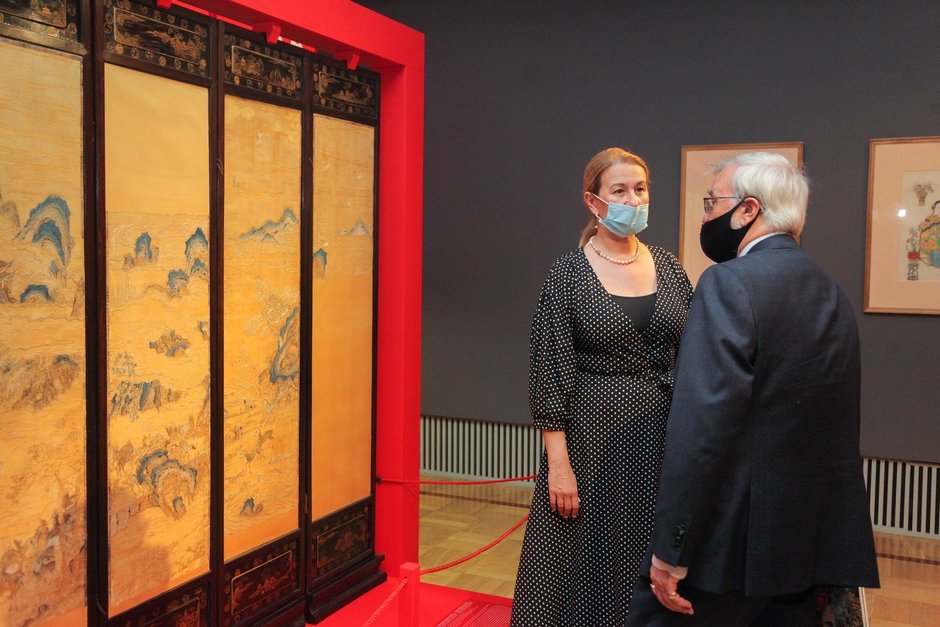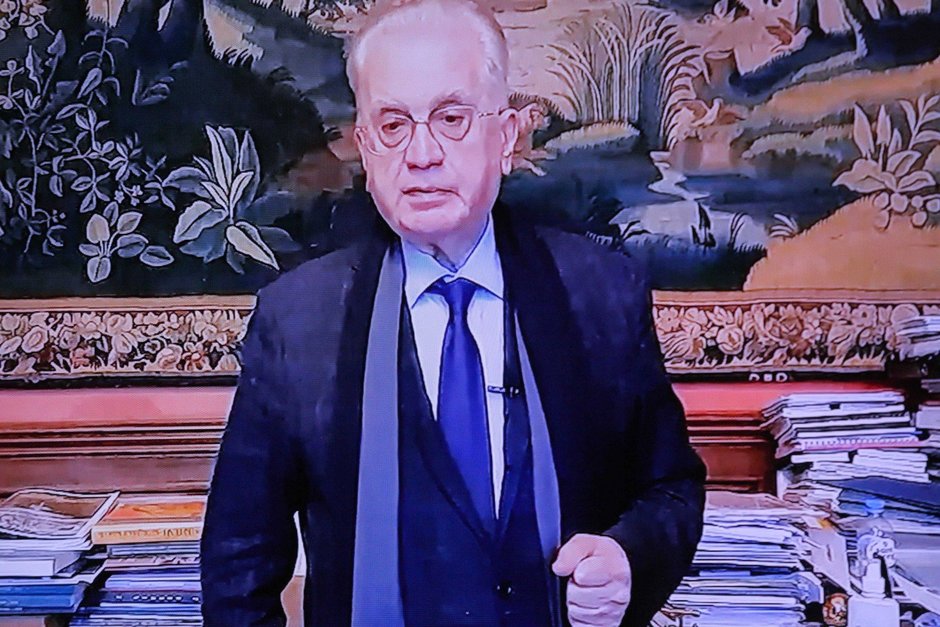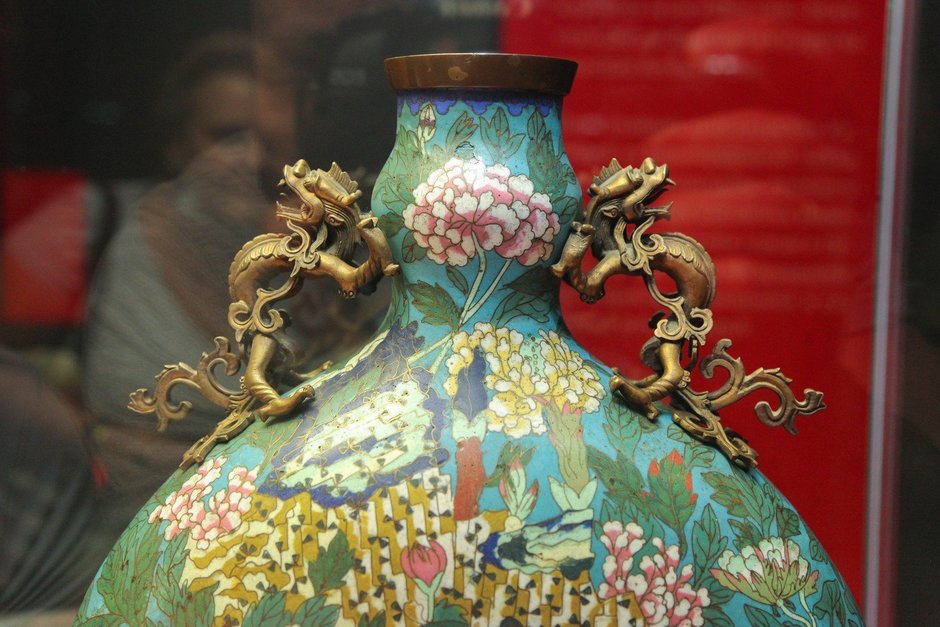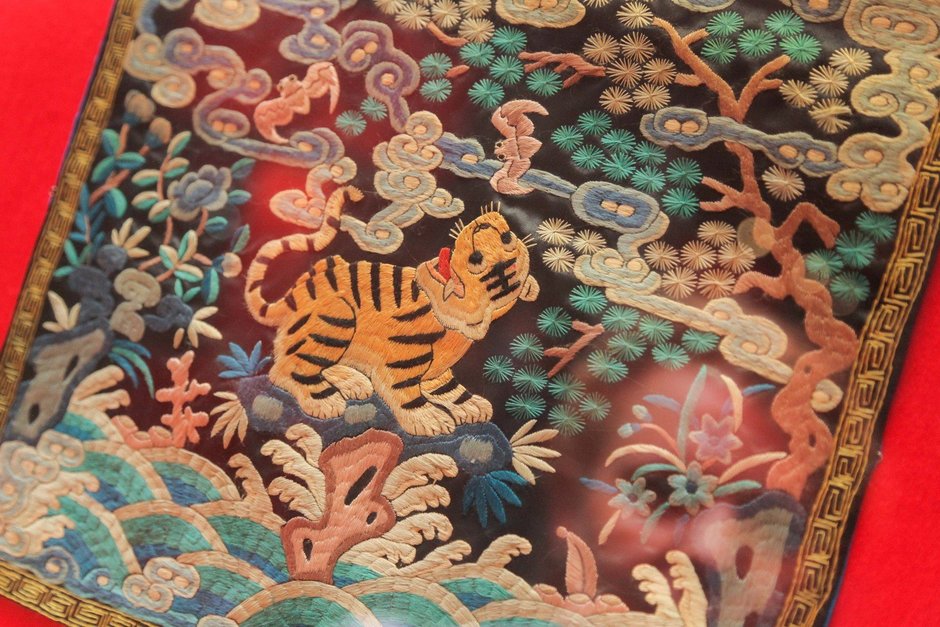To Hermitage for luck: world’s elephants, longevity mushrooms and careerist carp
Five Symbols of Happiness: Well-Wishing in Chinese Art opened in Kazan
Five Symbols of Happiness: Well-Wishing in 17-20th-century Chinese Art exhibition from Collections of the State Hermitage opened at the Hermitage-Kazan Centre. Nearly 300 exhibits that arrived in the capital of Tatarstan cover several centuries of the ancient civilisation that has not stopped even once in 5,000 years. Bats and peonies, peaches and toads — everything, fortunately, becomes clear in the exposition. Read why the gods’ mouths in images were put on honey, what symbolises Chinese cabbage and lingzhi mushroom and why they need three-legged toads in Realnoe Vremya’s report.
Good luck
State Hermitage Days in Kazan took place on 16 and 17 June. It was not only a big exhibition but also excursions with a curator, films, an educational programme for children and even a meeting of the Herald Council under the Tatarstan President. But if these events ended at the Hermitage-Kazan on 17 June, the exhibition Five Symbols of Happiness: Well-Wishing in Chinese Art will be open until 30 January 2022.
The PRC’s Consul General in Kazan Wu Yingqin noted at the opening that he was very glad to be at such an interesting exhibition:
“It has been so pleasant to be here as if I have been to China. We have noticed that all exhibits are original here, this is especially valuable. One can learn about Chinese civilisation that hasn’t stopped for 5,000 years through them. Relations between countries, in fact, depend on the closeness of peoples, while such events foster mutual understanding. I thank the Tatarstan Ministry of Culture for the enthusiasm in establishing a cultural exchange between our regions, Tatarstan and Chinese provinces. Hopefully, after all restrictions are lifted, our relations will resume. One should visit China, of course, for a deeper understanding of our culture. Like Russia, we are also a great and multiethnic country, Mongols, Uyghur, Tatars, of course, live there. I want to wish all of us good luck.”
“The spirit of the Hermitage living in Kazan”
Director of the State Hermitage Mikhail Piotrovsky opened the 23rd project of the museum in Kazan. This time, he sent a video with a welcome speech. He particularly stressed that “the art is designed to create talismans and good wishes”:
“When kind words are written on beautiful things, this helps in life very much. All exhibits are not only museum objects but also the spirit of the Hermitage in Kazan, it is a brand and a symbol that has been living in Kazan for many years.”
The exposition is located in all the halls of the centre. Every room is responsible for a specific wish. Five is just a number, the quantity of symbols and wishes is bigger. However, it is a sacred number for the Chinese. There are several interpretations of “five types of happiness”. During the rule of the Han dynasty, 200 BC, they looked this way: longevity was first, well-being or wealth was second, nobility, which includes a successful career too, was third, peace, harmony and family happiness were fourth and numerous male progeny was fifth.
“We created an exhibition with unique objects,” said curator, researcher of the Eastern Department of the State Hermitage Lidiya Potochkina. “The symbols attracting happiness were the same in China for both the public and emperors. Obviously, they were pictured on different materials and in different techniques. We have brought all this diversity to Kazan: wall paintings and bronze vases, china and fabrics, wood, nephrite and ivory.”
New Year picture: put on honey and bury
Lidiya Potochkina noted that many exhibits had deliberately been restored for the Kazan exhibition. It turns out that 60 objects left storerooms of the Hermitage for the first time and came into light precisely in Tatarstan. Among them, there are, for example, New Year pictures that museum workers often name as lubok images. About 30 of such images were restored, and 80 pictures are being exhibited.
Interestingly, they haven’t almost remained in China itself, while the richest collection in the world comprising 5,000 images is based precisely in Russia. It is collected by Professor Vasily Alexeyev early last century and was given to the Hermitage. The New Year pictures didn’t survive in their homeland for a simple reason: they were too cheap and thus available to anybody. Laymen used to buy them before New Year. Images of gods, immortals, episodes of history and ancient legends delivered certain wishes of happiness. New Year pictures used to hang in the house throughout the year, while before welcoming a new year they were burnt. Before this, divinities’ mouths were put on honey. It was considered that after being burnt, they reported on a family’s well-being to the supreme divinity. If their mouth was covered with honey, they were supposed to say only good things about their owners, which means happiness and pity were secured.
A lure for greedy toad
Legends and stories about gods in China passed from generation to generation. For instance, there is a story about the immortal: a well dried up because a toad settled in. The immortal knew that this toad was greedy, this is why he decided to buy it off with money he tied to a rope and threw into the well. Trying to get the money, the toad went up and left the well. Water appeared in the well again, while the toad with money became a symbol of wealth and well-being as a source of full water.
A simple image of dreams is the most habitual way of wishing happiness among Chinese symbols. For instance, a figure or a picture of a fat smiling boy is a wish of healthy sons. This is why fat male kids can be seen in numerous objects. For instance, on the New Year picture When the Fish Turns Into a Dragon, It Goes Up the River at the exhibition. The picture shows a carp going through rapids, the fish is compared with a student trying to pass exams to become a functionary. It is a river image of the “social ladder”.
Nephritis cabbage and stolen peaches
A huge vessel from china with nine red bats draws our attention and frightens us somehow. It doesn’t drop a hint to Wuhan: the red bat is the most famous and frequently encountered symbol of happiness. A nephrite vase looks original in the hall with wealth symbols. It looks like a Chinese cabbage head and is designed to bring its host a lot of money. Its image is interpreted as “Might your wealth multiply”. Is this a reason why money in Russia is called cabbage? By the way, peonies also talk about wealth.
Another china vase imitates lingzhi mushroom. This mushroom was one of the ingredients of immortality pills since ancient times, its long-term use promised longevity. Peach is another symbol of longevity, its images are often seen on different objects. Legend has it that there was a Dao immortal who had peaches in her garden. The tree bore fruit once in several hundreds of years or more. At this moment, the goddess gathered her equals, other immortals. Of course, the public wanted to taste the cherished fruit. How to do it? Sneak up and steal it. A monkey did this and consequently turned into Sun Wukong, Monkey King, who is later known in Wu Cheng'en’s novel Journey to the West. A lot of nations have this artful hero: ingenious Polichinelle in France, wise Petrushka pretending to be silly in Russia or even Brighella from Commedia dell'arte.
Superstitions today
Elephants are a symbol of peace, harmony and prosperity, wealth and richness not only in a family but also across the country. A pair of elephant-like altar vases talks about this at the exhibition. They are made of bronze dated back to the Qing dynasty in the 18th century.
In fact, it is impossible to enumerate everything: there is furniture, a rug for a festive table, a floor screen encrusted with verses of one of the emperors, exquisite cups for brushes, vases and the nobility’s wedding dresses... However, one should have a look at a funny three-legged bronze toad made in the 16-17th centuries. A master created this figure from bronze during the Ming dynasty’s rule both as a censer and money box. While the lack of extremities is for fun. In any case, this is what the literature says. We can even single out a new superstition nowadays: go to the Hermitage for luck.
“The exhibition won’t tell you what happiness is. But it will teach how to wish happiness and how to learn to feel it. Symbols are one of the important criteria to determine a civilisation’s development level, especially when eternal values are shown through them. This exhibition gives one a chance of realising and assessing one’s past and, most importantly, defining your future strategy for personal growth. I hope these five happiness symbols become beacons in our life, allow overcoming difficulties, having time to see and feel happiness,” Tatarstan Minister of Culture Irada Ayupova said at the exhibition.
